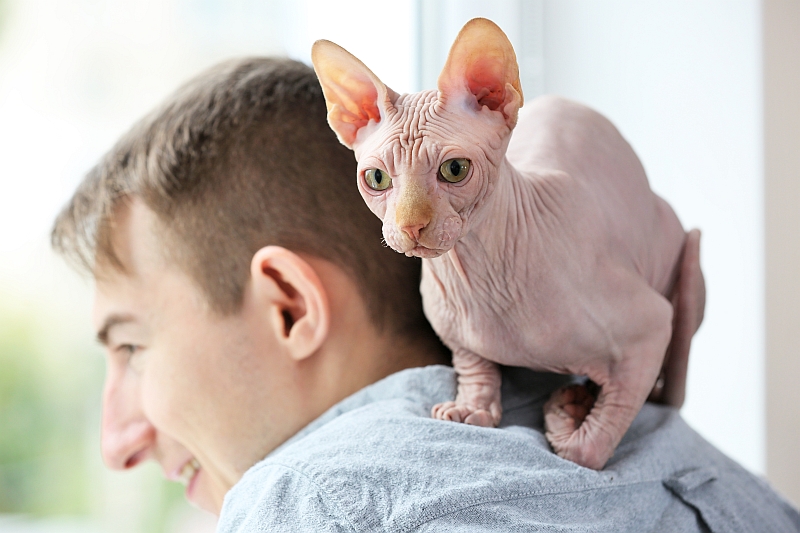For those unfamiliar with this particular breed, the Sphynx cat is rather jarring to behold at first glance. Their high cheekbones, prominent ears, pointy tails and most uniquely, their apparently hairless bodies make these cats stand out of a crowd. Find out how much you actually know about this breed, and why they are so cherished by their devoted pet owners.
Facts About Sphynx Cats
- While Sphynx cats are officially regarded as a hairless breed, they actually are covered with fuzzy thin hairs that are fine and soft. Though they still produce dander, the amount is far less than other cats, making the Sphynx a great companion for people with severe pet allergies.
- One feature that sets these felines apart, is their ability to maneuver their toes independently from each other. Unlike many cats who use their paws more like mitts, the Sphynx can use the fingers of their hands and feet separately, being able to pick up items or turn them over with one of their toes.
- These alien-like creatures are incredible affectionate, and love to cuddle up to their owners. They love any kind of preening and petting they can get and will even follow a person around, rubbing the top of their head on the human’s legs.
- Because of their meager hair coverage, this breed can get extremely cold quite easily. Cat owners who live in cooler climates would be wise to keep a thickly padded kitty bed, with warm blankets for their Sphynx. It would also be helpful to suit them up with knit sweaters and cat-coats if you notice the Sphynx shivering. If given the chance, these cats will also try to soak up as much sunlight as they can, exposing their skin to the harsh burning rays. Keep sunblock nearby for these heat-worshipping creatures.
- The appearance of the Sphynx cat is so distinct, that many people imagine they are an older breed originating from Egypt, the Middle East, or some ancient civilizations. etc. (A couple hairless dog breeds can trace their roots back to Mayan and early Mexican cultures.) However, the Sphynx was discovered relatively recently, in Canada in the 1960’s.
- As Sphynx cats do not have thick coats, it would be easy to assume that they require very little for grooming. However, when you factor in dental care, paw care, eye and ear cleaning, and wiping down their coats and weekly baths to remove the dirt and oil buildup on their scalp, Sphynxes do end up needed about the same amount of attention as other cats. The only thing they don’t need is a good brush and hair trim!
- Sphynx cats though they may not have coat coloring like other breeds, can be a solid color, have patches, flashes, spots, and be bi-colored. They are most often black, gray, pink, white, or multicolored.
- The fast metabolism of the Sphynx cat means that they eat often, and with their hearty appetites, they can consume generous amounts. Because of this, lots of Sphynxes have largely protruding “Buddha bellies” while the rest of their limbs stay slight.
- The Sphynx has an active personality, loving to climb, leap, chase, and explore every inch of their dwelling. If a Sphynx goes hiding, the owner may find him in some very unexpected places.
- The Sphynx also has several other hairless “cousin” breeds, including the Russian Sphynx (the Peterbald, and the Don Sphynx ), as well as the Canadian Sphynx.

